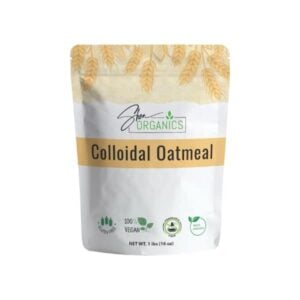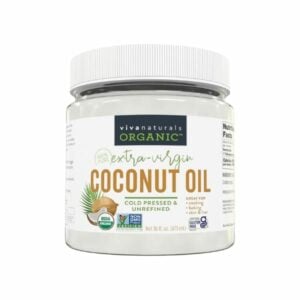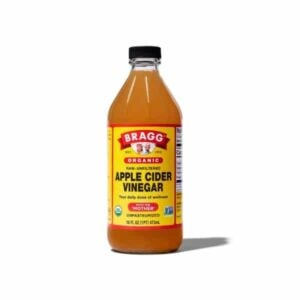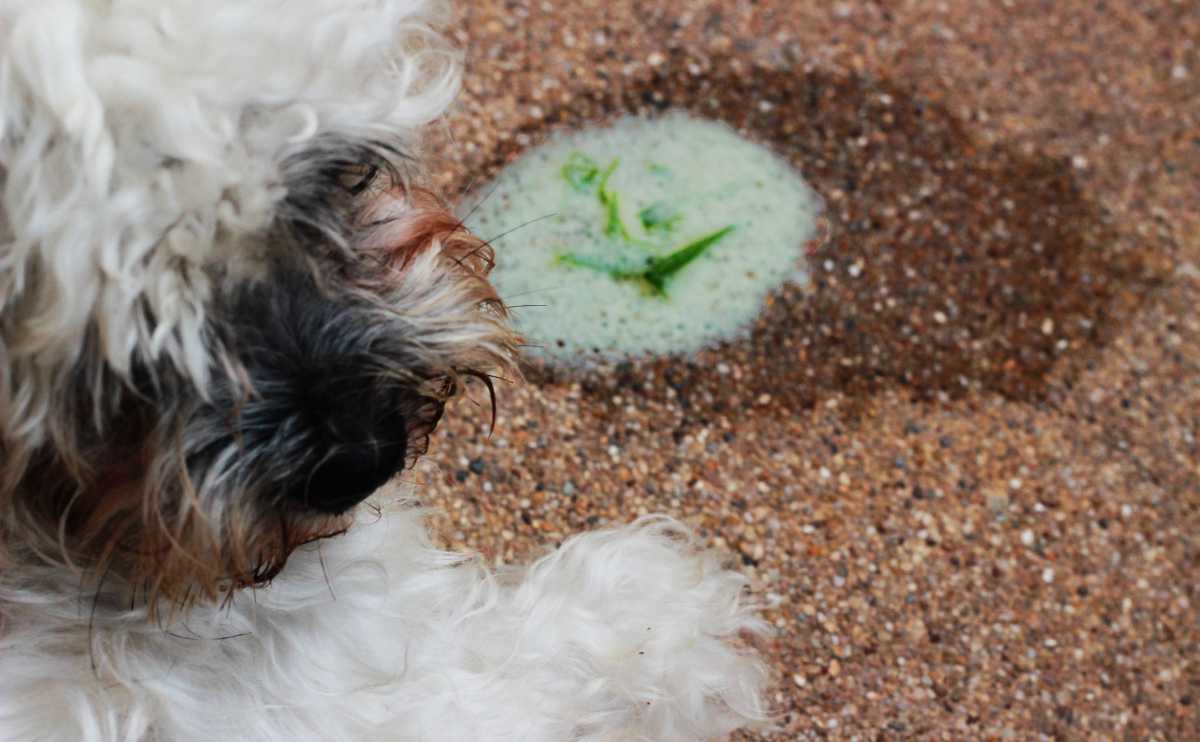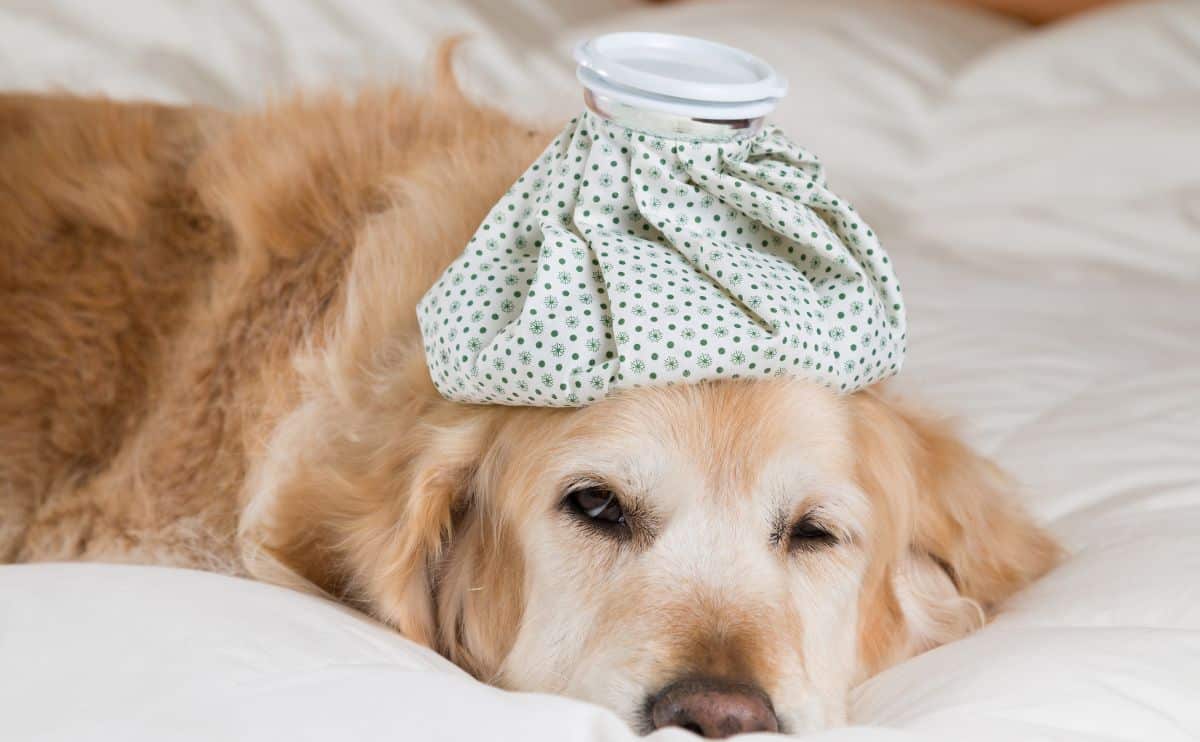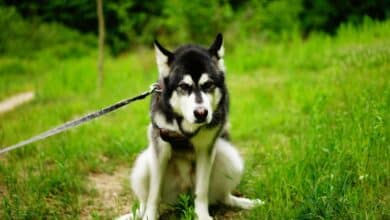How To Stop Dog From Licking Paws Home Remedy: The Best DIY Treatments, Prevention Tips & Our Experience
When you purchase through links on our site, we may earn a commission. Here’s how it works.
Your dog’s constant paw-licking might be more than a quirky habit; it’s often their way of saying something’s wrong. Learn what’s normal vs. excessive, how to soothe paws naturally, and when a vet visit is your best move.
Table of Contents

If Your Dog Won’t Stop Licking Their Paws … You’re Not Alone
Every dog parent knows that sinking feeling when your pup will not stop licking. You can’t tell if it is something minor or serious. The sound keeps you up at night, and your dog looks uncomfortable.
The good news is that most cases can be managed at home with a few smart tweaks and a little detective work.
Let’s explore why dogs lick their paws, the hidden causes behind it, and how to help your best friend find relief quickly.
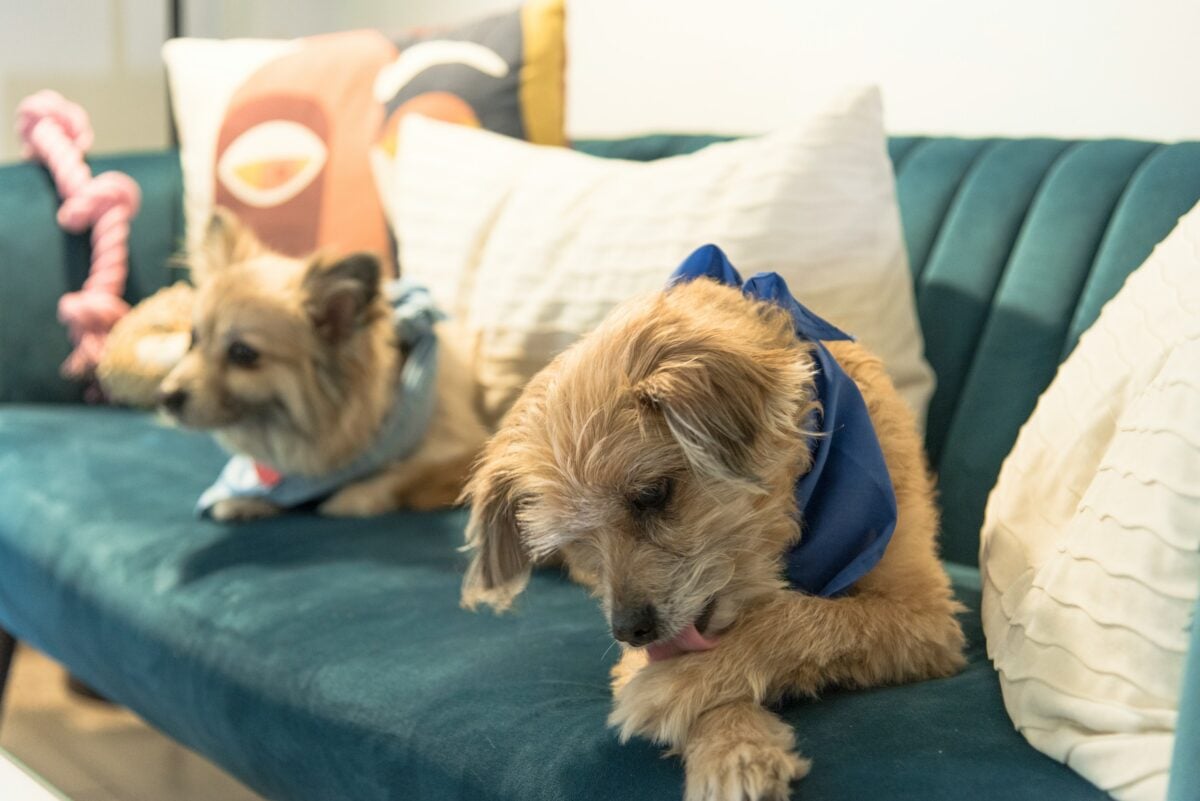
Why Dogs Lick Their Paws
Paw licking is part of normal self-grooming, but excessive licking usually signals discomfort or an underlying issue. Pinpointing the reason helps you choose the right remedy.
- Injury – Cuts, burns from hot pavement, insect stings, soft-tissue strain, or a broken toe. If your dog allows, inspect carefully for heat, pain, blood, or debris.
- Foreign object – Grass awns, splinters, foxtails, ice melt, or road salt can lodge between toes or in pads.
- Skin irritation – A strong or unusual odor, redness, or dampness points to irritation.
- Allergies – Food or environmental (pollen, dust mites, molds). Licking soothes itch but worsens inflammation over time.
- Parasites – Fleas, mites, or other parasites can trigger intense itching in paws.
- Infections – Yeast, bacterial, or mixed infections may arise on their own or as a result of licking or irritation.
- Growths or abscess – Digital cysts, tumors, or draining tracts can be painful.
- Pain – Arthritis, sprains, or referred pain can cause licking even when the skin looks normal.

Pro Tip: Take a quick photo before and after home care to track progress and notice changes over time. We have a complete guide on why dogs lick their paws, so be sure to check that out, too.
When Paw Licking Becomes A Problem (Red Flags)
If you are unsure whether your dog’s licking is harmless or a sign of trouble, look for these warning signs. They indicate that it may be time to call your veterinarian.
Seek veterinary advice ASAP if you notice:
- Bleeding, oozing, or open sores
- Marked swelling, heat, or foul “corn chip” odor stronger than usual
- Sudden or persistent limping
- A visible foreign object or puncture wound
- Lumps/growths between toes or pads
- Ear scratching/head shaking (common with allergies)
- Hair loss or reddish staining from saliva
- No improvement or worsening after 7–10 days of home care
How To Inspect Your Dog’s Paws in Two Minutes
Before trying any home remedy, perform a quick inspection of your dog’s paws. This helps you spot potential problems early and guide the right next steps.
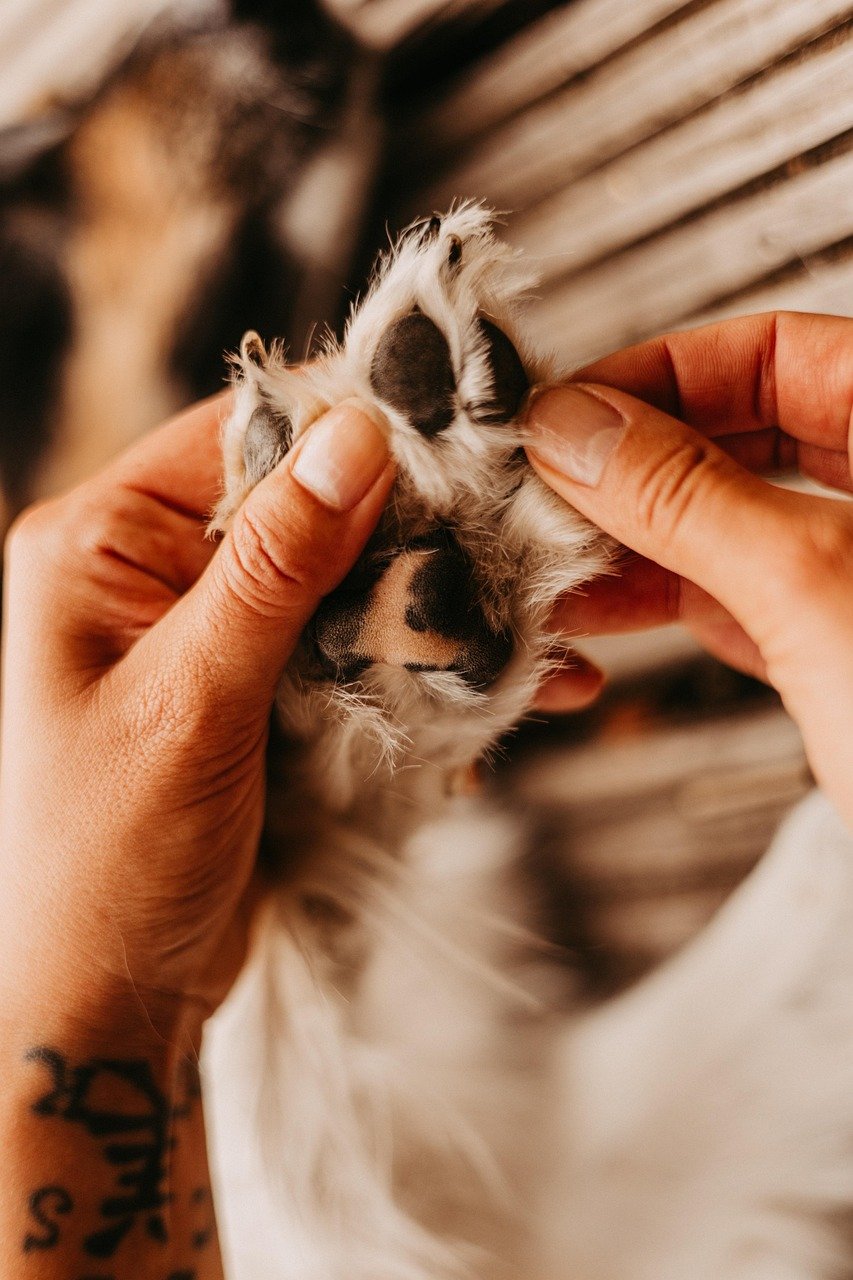
- Set the mood – Calm your dog with treats and gentle praise.
- Look and feel – Check pads, webbing, and nail beds for heat, pain, or debris.
- Smell – A sour or musty odor may indicate infection.
- Wipe and dry – Use a soft cloth and pat dry; never leave moisture trapped.
- Tidy up – Trim fur between pads and clip nails to prevent splaying.
- Note changes – Record any redness, swelling, or behavior shifts.
Safety note: If your dog yelps or you spot a deep wound or foreign object, stop home care and call your vet.
5 Gentle Home Remedies To Stop Paw Licking
Always match the remedy to the cause and avoid applying anything that stings to broken skin. When in doubt, check with your vet.
1. Oatmeal Paw Soak (For Irritation & Allergies)
This remedy is one of the most soothing and natural ways to calm irritated or allergy-prone paws. Oatmeal helps reduce inflammation while gently cleansing trapped dirt and allergens.
- Why it works: Oatmeal calms inflammation and washes away pollen or dust.
- How: Grind plain oats into powder or use colloidal oatmeal. Add to lukewarm water until milky; soak paws for 10 minutes, rinse, and pat dry.
- When: Daily during allergy flare‑ups or after walks on dusty/sandy ground.
2. Coconut Oil Balm (For Dry Or Cracked Pads)
Coconut oil is a simple yet powerful moisturizer that restores softness to rough or cracked pads. It also adds a protective layer that locks in moisture and prevents further irritation.
View On Amazon | View on Walmart
- Why it works: Moisturizes and provides light antimicrobial protection.
- How: Massage a small dab into each paw once a day; slip on baby socks or booties for 10–15 minutes.
- Note: Use organic, unrefined oil; limit licking to avoid tummy upset.
3. Apple Cider Vinegar Rinse (For Mild Yeast On Intact Skin)
A diluted apple cider vinegar solution can help restore balance to the skin and discourage yeast overgrowth.
- Mix: 1 part apple cider vinegar to 1 part water.
- Use: Lightly mist paws, wait 1 minute, rinse, and dry.
- Warning: Never apply on open skin—it stings and can worsen irritation.
Pro Tip: If your dog resists paw soaks or sprays, turn it into a bonding routine. Try using a treat-dispensing toy during the soak or massaging their shoulders while you clean. Making paw care positive encourages cooperation and strengthens trust over time.
4. Vet-Approved Antihistamines (For Allergy-Driven Itch)
Certain allergy medications can offer temporary relief when itching is caused by environmental triggers.
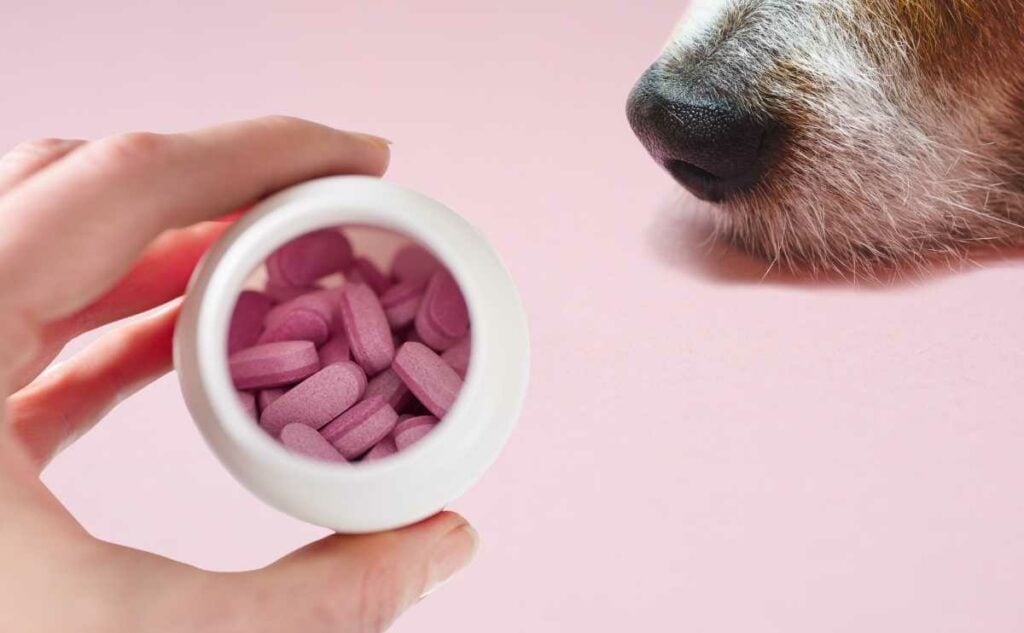
- Use only with vet approval. Some OTC antihistamines are safe for dogs (diphenhydramine), but avoid those with xylitol or combo ingredients.
- Ask your vet for exact dosage and safe brands for your dog’s size and breed.
5. Behavior Reset (For Anxiety or Habitual Licking)
Sometimes, paw licking stems from emotional stress rather than a physical problem. Dogs often lick repetitively when anxious, bored, or under-stimulated. Common triggers include changes in routine, loneliness, or a lack of exercise.
Identifying emotional causes and combining behavior enrichment with physical remedies can help your dog relax and heal more quickly.
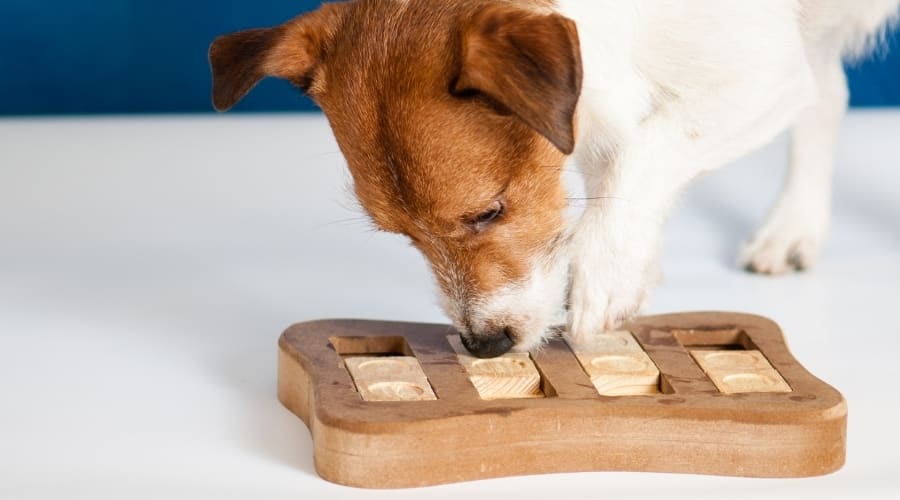
- Add daily exercise, sniff walks, and puzzle feeders.
- Redirect with a toy or mat‑settle cue when licking starts.
- If it’s chronic or stress‑driven, consult a trainer or veterinary behaviorist.
Quick takeaway: Home remedies help only if you have addressed the cause; otherwise, it is like putting a bandage on an itch.
Prevention: Daily Habits To Keep Paws Healthy
Healthy paws start with overall wellness. Hydration, balanced nutrition, and daily activity all influence your dog’s skin and paw condition.
Dehydration or a poor diet can make pads brittle and more prone to cracking. Regular walks on varied terrain also toughen paw pads naturally while improving circulation and joint health.
Think of paw care as an extension of your dog’s daily health routine, not just a reaction to problems.
- Rinse & dry after walks to remove allergens or salt.
- Protect outdoors: Booties on hot pavement, ice, or treated lawns.
- Maintain parasite prevention all year.
- Switch to pet‑safe cleaners and lawn care products.
- Feed a quality diet: If food allergies are suspected, try a limited‑ingredient diet or vet-guided elimination trial.
- Ask your vet about supplements, including probiotics for gut‑skin balance, omega‑3s to reduce inflammation, and calming supplements if anxiety contributes.
Long-Term Paw Care Routine
Once your dog’s paws are healthy again, maintaining them is the key to preventing future problems. Build a simple routine that becomes part of your weekly care habits.
Start by scheduling a quick paw check every weekend. Look for cracks, dryness, or changes in color.
Keep nails trimmed so your dog’s weight distributes evenly across the pads, reducing strain. Moisturize with a paw balm two or three times a week, especially if you live in a dry or salty environment.
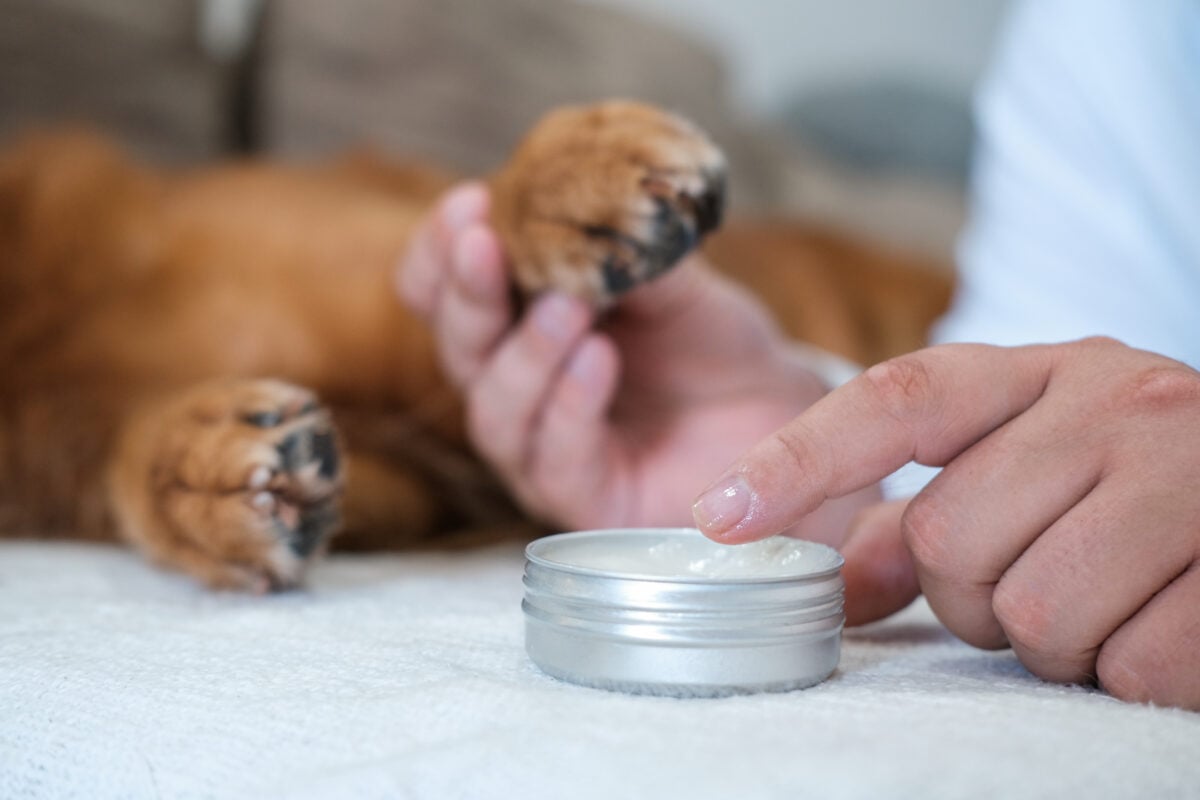
Rotate between grass, dirt, and pavement on walks to naturally strengthen the pads while keeping them flexible. During high-activity days, give paws a rest period just as you would for sore muscles.
Consistent care takes only a few minutes but makes a lasting difference in your dog’s comfort and mobility.
Seasonal Paw Care Tips
Each season brings new challenges for your dog’s paws. Adjusting your care routine throughout the year can help prevent problems before they start.
- Winter: Road salt and icy surfaces can cause cracks and irritation. Rinse paws after walks and apply a moisturizing balm to protect against dryness.
- Summer: Hot pavement can burn sensitive pads. Walk early or late in the day and use protective booties during peak heat.
- Allergy Season: Pollen and grass can cling to paws and cause itching. Wipe paws after outdoor play and keep paw fur trimmed to reduce buildup.
Tools To Block Licking While Healing
While you work on solving the root cause, it can help to use tools that prevent your dog from making the irritation worse.
- Booties/socks indoors to cover balmed paws.
- Soft E‑collar to stop self‑chewing.
- Bitter anti‑chew spray on wraps (never skin) to discourage licking.
Comfort During Recovery
Recovery can be uncomfortable for dogs, especially if they must wear a collar or booties. Offer extra reassurance, gentle massages, and short play sessions to lift their spirits. Maintaining a calm environment helps them rest and heal faster.
When To See The Vet
If you have tried home remedies but your dog is still licking excessively, or if their paws look worse, it is time to seek professional help. Your vet can determine whether allergies, infections, or pain are at play.
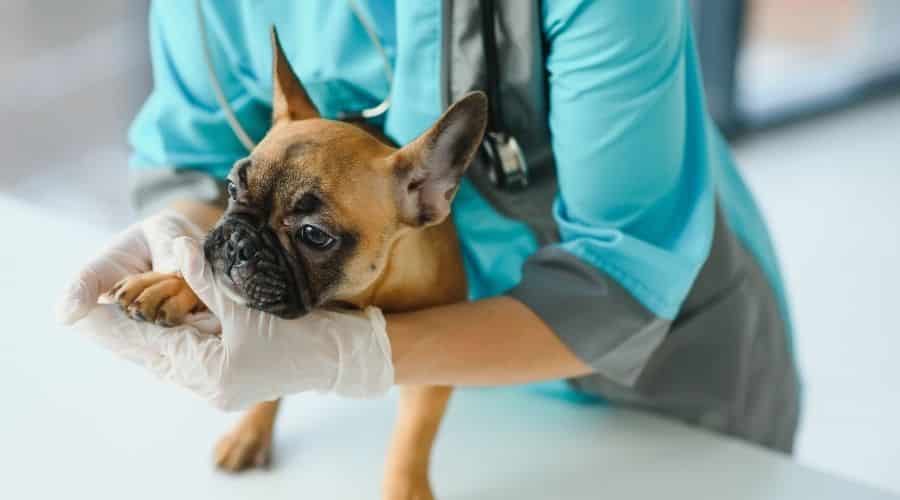
- Immediate: bleeding, swelling, embedded object, severe limp, or deep wound.
- Within 24–48 hours: persistent discomfort or no sleep due to licking.
- Within 7–10 days: no improvement after consistent home care.
Vets may run skin scrapings, cultures, parasite checks, or allergy tests, and prescribe topical/oral meds or anti‑inflammatories as needed.
Good to know: Pet insurance can cover many paw-related treatments. Check your plan details.
Our Story: Bonkers & The Sand Mystery
I rescued my dog Bonkers in 2015, and he never licked his paws beyond routine grooming. But in 2021, I moved to the coast.
After we moved, Bonkers started to sneeze and chew his paws excessively after every beach walk. I checked his paws and couldn’t see anything.
At first, I thought it might be an allergy. However, it took me a few weeks to realize that this was probably a result of the sand being stuck in his paws and up his nose.
I now rinse his paws after every beach walk, and he has never excessively licked his paws since. He still sneezes quite a lot, but I don’t think he’d appreciate the hose up his nose!
Sometimes, something as simple as sand, dirt, and dust can cause non-stop paw licking.
– Emma Braby, Dog Mom & Writer For Canine Journal

How To Clean Your Dog’s Paws (Daily Routine)
Establishing a daily paw-cleaning routine keeps your dog’s paws healthy and helps you spot small problems before they become serious.
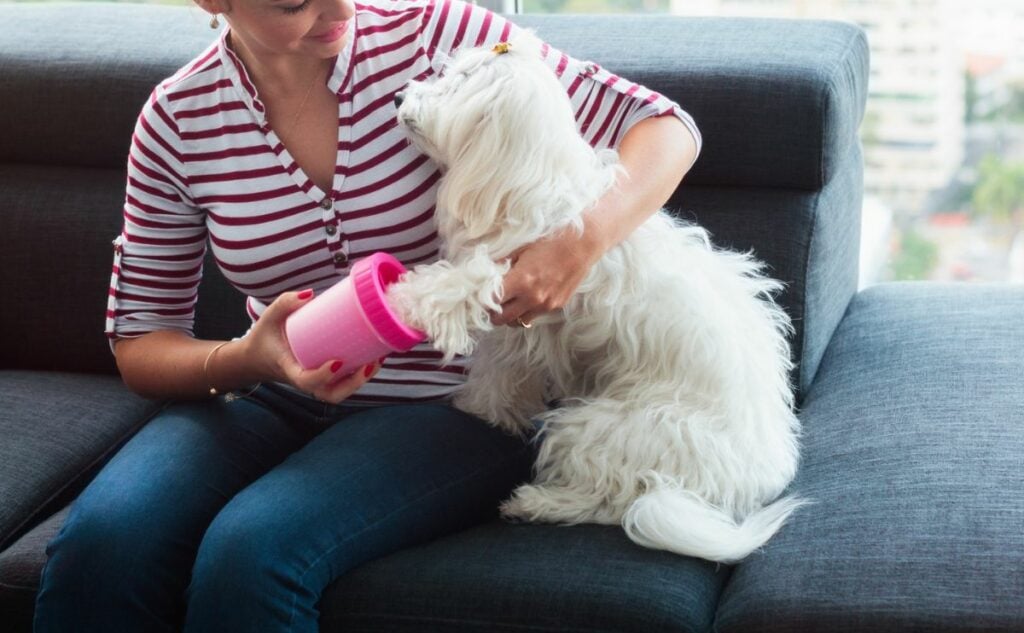
- Rinse with lukewarm water after walks.
- Use a gentle paw cleanser if needed.
- Pat dry thoroughly, especially between toes.
- Moisturize dry pads with a light balm.
- Check daily for debris, cracks, or odor.
Pro tip: Pair paw checks with treats to create a positive association.
Frequently Asked Questions
We know some of our readers still have questions about itchy dog paws and why they lick them. If you don’t see your question below, ask us in the comments, and we’ll find the answer for you.
Why is my dog licking their paws so much?
Excessive licking can result from irritation, allergies, pain, or even anxiety. Sometimes the cause is as simple as a small cut or something stuck between their toes, but it can also be due to allergies or joint discomfort.
Monitor your dog’s behavior closely. If you see redness, swelling, odor, or limping, consult your vet for an exam to rule out infections or more serious conditions.
What’s The Best Home Remedy To Stop My Dog Licking Their Paws?
The best home remedy depends on the cause. Oatmeal soaks are gentle and great for soothing irritation, while coconut oil helps restore moisture to cracked pads. If yeast is suspected, a diluted apple cider vinegar rinse may help on unbroken skin.
Always confirm that the paws are free of open wounds before applying any solution. When in doubt, start with gentle cleaning and drying, and consult your vet if the problem continues.
How Long Do Home Remedies Take To Work?
Mild irritation may improve within a few days, but chronic conditions can take one to two weeks of consistent care. If you see no change after ten days, it likely requires veterinary treatment.
The key is consistency: soak or clean paws daily, keep them dry, and minimize further irritation.
Could it be behavioral?
Yes. Dogs sometimes lick excessively from boredom, anxiety, or stress rather than a physical problem. Common emotional triggers include long hours alone, lack of exercise, or big changes in the household.
Increasing daily walks, introducing puzzle feeders, and providing chew toys can help redirect the behavior. If the habit becomes obsessive, a professional dog trainer or behaviorist can provide structured support.
Paw licking can also be a behavioral symptom of cognitive dysfunction syndrome (CDS). CDS is also known as dementia, and not many people know that dementia affects dogs as well as humans.
If your senior dog is excessively licking their paws, try offering them senior-friendly activities such as video games for dog dementia (yes, you read that right) or other stimulating brain games for dogs to steer them away from licking their paws.
Are some dogs more prone?
Absolutely. Breeds with sensitive skin or allergy tendencies, such as Bulldogs, Labradors, Golden Retrievers, and Terriers, are more likely to develop paw problems.
Dogs that spend a lot of time outdoors or live in areas with extreme weather are also at higher risk. Regular cleaning, moisturizing, and early detection are especially important for these breeds.
Other Ways To Take Care Of Your Dog’s Health
Taking care of your dog’s paws is super important. Not only are they on their feet for most of the day, either getting around or playing, but they also use their paws to communicate with us.
Like their paws, a dog’s ears are a window into their overall health and are essential to their well-being. Check out our guide on dog ear infections and the best dog ear-cleaning solutions with tips on caring for them.
